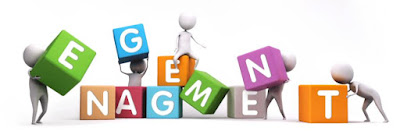Virtually all employee engagement
efforts begin with some kind of logically designed survey that will give
management some kind score from which you can implement some kind of process to
influence that score. The score can be 1
to 5, or 10 or even 1 to 100. It
theoretically gives management some kind of engagement continuum to measure how
well your employees are engaged, or not pending your point of view.
On a broad scale we suppose it does tell
you at least something about the overall feeling, mood, temperament, attitude
or general frame of mind of the company.
So now you have a place from which to change, based on all the tools you
put in place to drive engagement. And
management will do what they are supposed to do, they will attempt to achieve
the goal…total employee engagement.
Sorry to say, that’s not possible, has
anyone ever achieved total employee engagement?
Companies love to work from objective “To Do” list of engagements so
they can check the various items off the list.
Help with personal growth? Check.
Fully involved Wellness program? Check. Implement continuous feedback?
Check. Make work fun? Check. Establish
company wide recognition effort? Check. Encourage experimentation? Check. Implement another engagement survey? Check.
So what now? You moved the score up a
few notches, what’s left? As you add new
benefits or programs engagement scores will rise and then most likely fall
back. There won’t be an end, you will
always have an average score.
The only real important element is the
fact that you are engaged. Safety experts prove that all the time by
simply paying attention to the workers and recognizing their positive safety
performance. Other consultants have
proved that simply paying attention to workers can improve productivity.
Is employee engagement really about employee
engagement or about management engagement?
We’re talking about all of management, from front line supervisors thru
the department and division level to the executive floor. When they are engaged with the employees,
listening to them, relating to them, encouraging them and even correcting them,
your employees will be engaged. And when
you build a company from that perspective, and as engaged employees move into
management your company will continue to grow and change.
For more
information on Ultimate Choice Inc.’s products or services or other white
papers please contact us at Ultimatechoiceinfo@cox.net










